Nordic Walking Challenges enthusiasts to embark on a journey of holistic well-being, integrating physical activity and nature immersion to revitalize both body and mind. Having personally experienced the invigorating benefits of Nordic walking, I’ve come to appreciate its transformative power for individuals seeking to enhance their fitness regimen. Nordic walking isn’t just a mere stroll; it’s a dynamic fusion of physical activity and nature immersion that revitalizes both body and mind.
Stemming from my own journey, I’ve witnessed how this activity fosters holistic well-being, making it a compelling choice for those looking to embrace a healthier lifestyle. Join me as we delve into the intricacies of Nordic walking, uncovering its myriad benefits and discovering effective strategies to set goals, monitor progress, and revel in the joy of movement.
Nordic Walking Challenges: How to Set Goals and Monitor Your Advancement
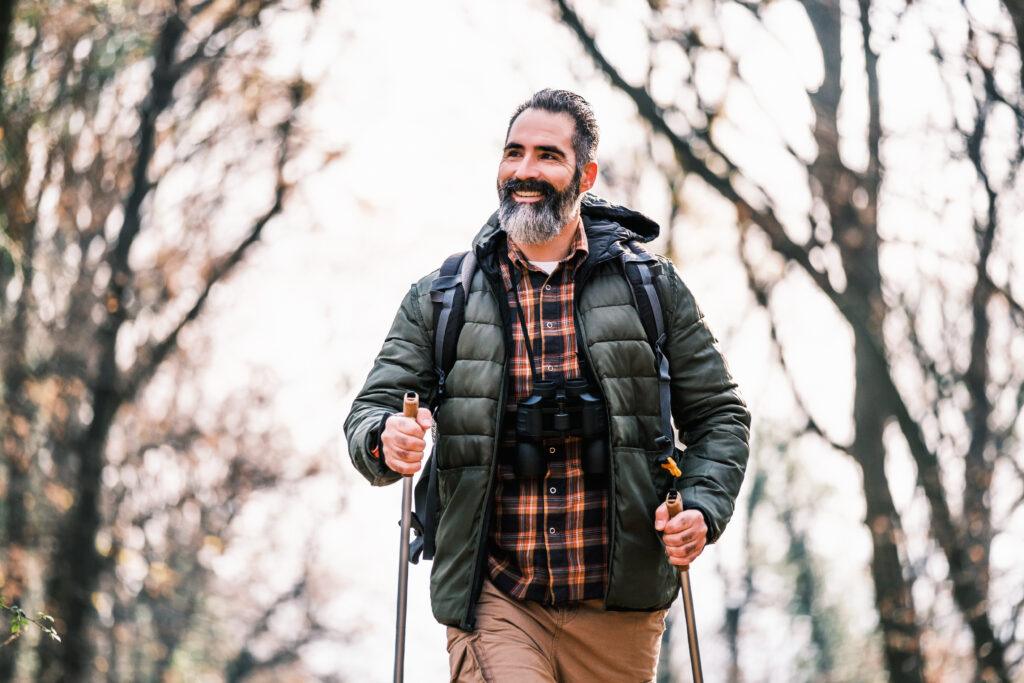
Nordic walking is a form of physical activity that combines walking with the use of specialized poles. This allows you to engage more muscle groups than ordinary walking. This low-impact, full-body exercise is suitable for all ages and fitness levels.
As interest in a healthier lifestyle continues to grow, so does the popularity of Nordic walking. By tracking your progress, you can stay motivated, improve your technique, and see tangible results of your efforts.
Whether you’re starting out or are an experienced Nordic walker, challenges can be an excellent way to keep your routine interesting and push your limits.
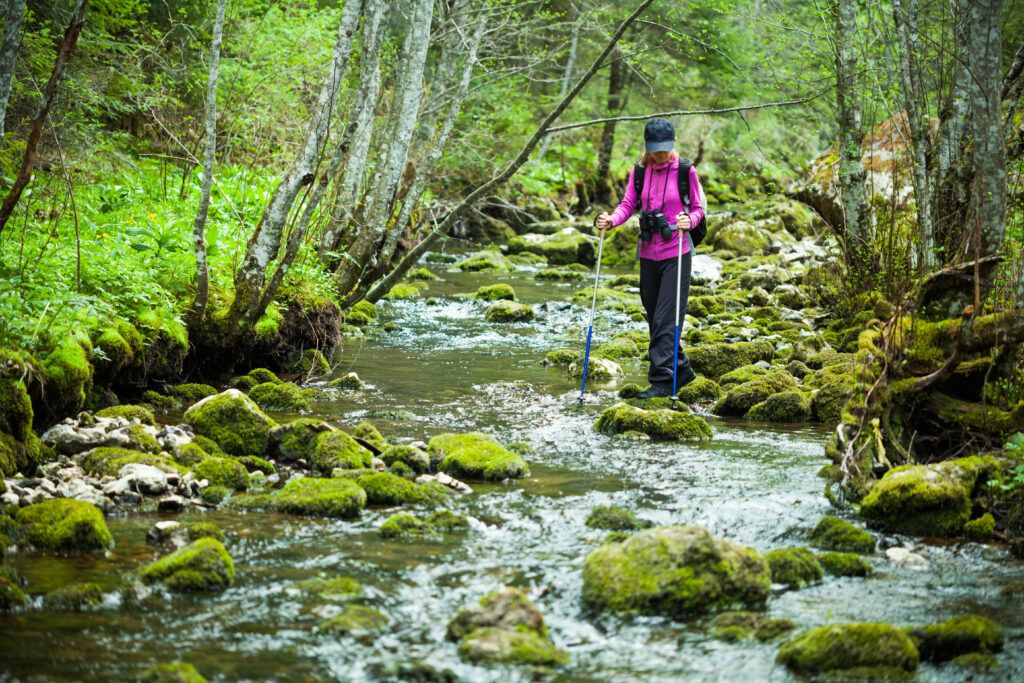
Proper equipment and preparation are key to a safe and effective workout. Learning the proper techniques and skills is essential for getting the most benefit from your efforts. Moreover, joining challenges and competitions, ensuring safety and injury prevention, and connecting with a community can further enhance your Nordic walking experience.
Knowing how to track your progress can help you in maintaining motivation over time, leading to improved performance and achieving your fitness goals.
Key Takeaways
- Nordic walking enhances engagement of multiple muscle groups for a full-body workout.
- Tracking progress motivates and improves technique and overall fitness performance.
- Challenges, community involvement, and proper preparation enhance the walking experience.
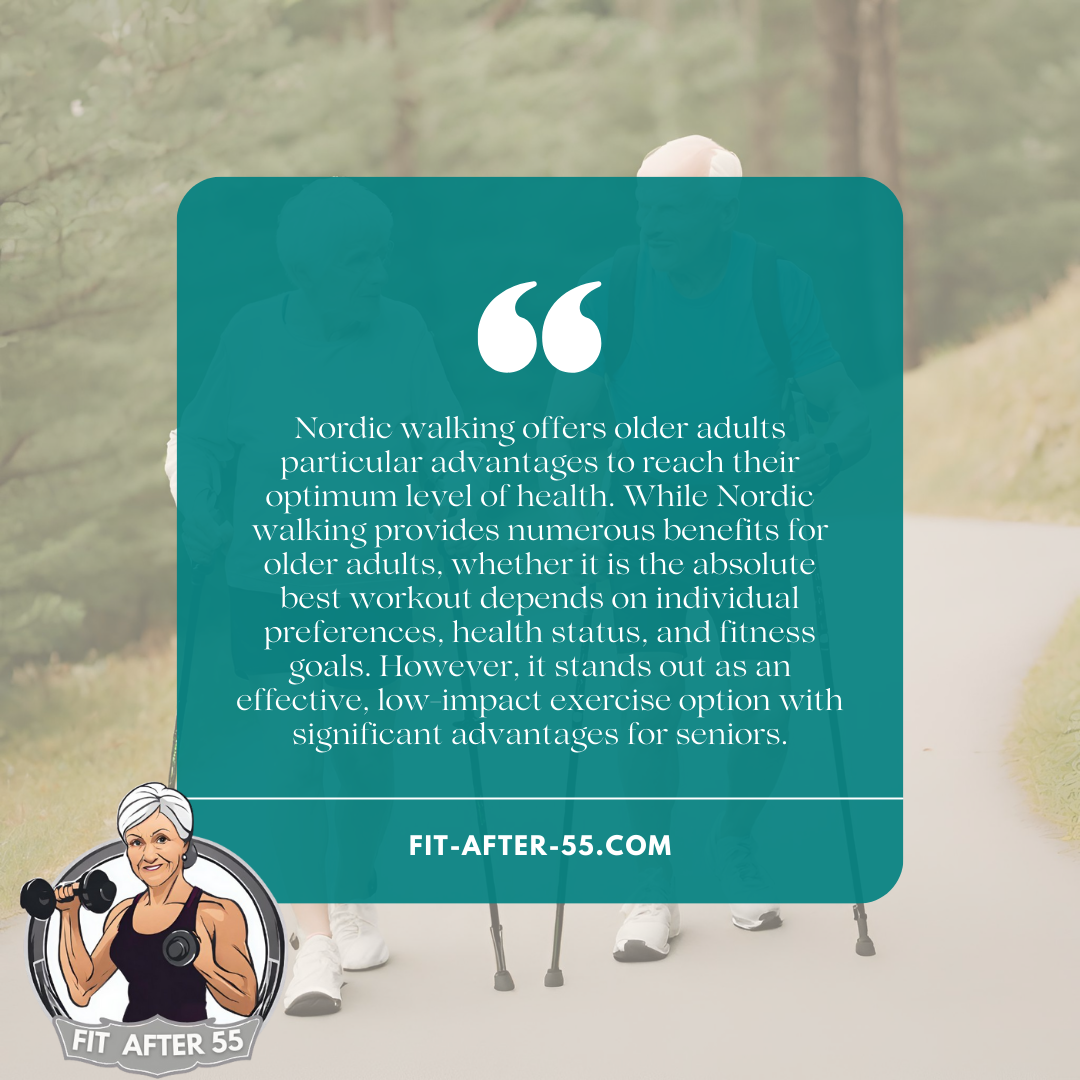
Understanding Nordic Walking
Nordic Walking is more than just a walk in the park; it’s an enhancing full-body exercise that originated as a summer training routine for cross-country skiers. Your awareness of its rich history and the benefits it offers can transform your approach to fitness.

History and Evolution of Nordic Walking
Nordic Walking began in Finland in the 1930s as a means for cross-country skiers to stay fit during the off-season. The activity integrates specially designed poles that add an upper body element to the exercise, simulating the motions of skiing.
Over the decades, Nordic Walking has evolved and gained popularity across the globe as a form of aerobic exercise accessible to people of all ages and fitness levels.
Benefits of Nordic Walking
The benefits of Nordic Walking are extensive and impactful on your overall fitness. It’s a low-impact activity, which makes it gentle on your joints, yet it effectively targets over 90% of your body’s muscles.
Here’s a snapshot of the key benefits you can expect from Nordic Walking:
- Increased Calorie Burn: Engaging more muscles means burning more calories compared to regular walking, enhancing weight loss and cardiovascular health.
- Full-Body Workout: By using poles, you actively engage your arms, chest, back, and core in addition to your legs, offering a comprehensive workout.
- Posture and Balance: The technique encourages a straight back and improved balance, contributing to better postural health.
- Community and Socialization: Joining Nordic Walking groups connects you with like-minded individuals, making workouts enjoyable and socially rewarding.
Embrace Nordic Walking to comprehensively upgrade your fitness regime, burning calories efficiently while fortifying muscle strength across your entire body.
Setting Goals and Motivation

In Nordic walking, as with any fitness regimen, having clear goals and staying motivated are essential for success. Your objectives should be structured and your motivation well understood to maintain consistency in your efforts.
Setting SMART Goals for Nordic Walking
SMART goals are Specific, Measurable, Achievable, Relevant, and Time-bound. For Nordic walking, a Specific goal could be to walk a certain distance or to improve technique.
Measurable might involve tracking the number of steps or time taken, while Achievable implies that the goal should be realistic given your current fitness level.
Relevance ensures that the goal matters to you personally, and Time-bound means setting a deadline.
Structuring your goals around these criteria can significantly enhance your ability to achieve them.
Finding Your ‘Why’
Understanding your motivation behind Nordic walking can greatly influence your dedication. It could be for improving cardiovascular health, weight management, or socializing with other Nordic walkers.
Your ‘why’ serves as your intrinsic motivation that drives you forward, even on less motivating days.
Motivational Strategies
To keep yourself motivated, implement strategies like:
- Setting Milestones: Breaking down your larger goal into smaller, achievable milestones.
- Celebrating Achievements: Reward yourself once you hit certain milestones.
- Tracking Progress: Use a walking challenge app to monitor your steps and progress.
- Social Support: Join Nordic walking groups to stay inspired and accountable.
Equipment and Preparation
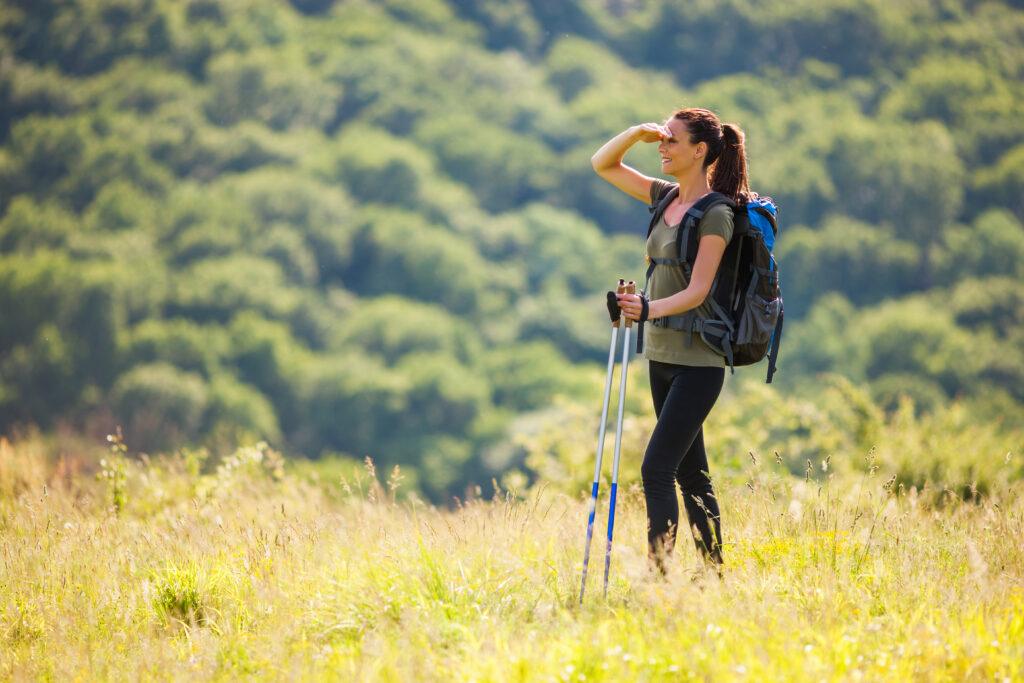
Before you start Nordic walking, it’s important to invest in the right equipment and prepare your body adequately. Carefully chosen gear and proper preparation can significantly enhance your walking experience.
Choosing the Right Nordic Walking Poles
When selecting Nordic walking poles, consider your height and the terrain where you’ll be walking. Look for poles with a comfortable grip and adjustable length for versatility.
Typically, poles should reach just below your armpits when standing upright.
- Height-Adjustable Poles: Great for varying terrain or multiple users.
- Fixed-Length Poles: Optimal for consistent walking environments.

Appropriate Nordic Walking Attire
Proper clothing should be weather-appropriate and allow for freedom of movement.
- Footwear: Choose running or walking shoes that provide good support.
- Clothing: Opt for moisture-wicking fabrics and layer up to adjust to changing temperatures.
Pre-Walk Warm-Up Exercises
A thorough warm-up is crucial to prepare your muscles and joints for the activity ahead.
- Shoulder Circles: Rotate shoulders gently to warm up the upper body.
- Leg Swings: Swing each leg back and forth to loosen the leg muscles.
- Walking Lunges: Perform a series of walking lunges to engage your lower body and increase heart rate.
A well-planned warm-up can help prevent injuries and make your Nordic walking session more effective.
Techniques and Skills

Mastering the techniques and skills of Nordic Walking improves the efficiency and effectiveness of your workouts. Developing a solid foundation is essential before advancing to more sophisticated methods.
Basic Nordic Walking Technique
Your foundation in Nordic Walking hinges on mastering the basic technique, which involves coordinated arm and leg movements—here’s how you do it:
- Hold your poles angling them backward and ensure they are of the correct length, reaching just under your armpits.
- Walk naturally with your usual stride, planting the pole opposite your forward foot.
- Push off with each pole to propel yourself forward, activating your upper body muscles.

Advanced Techniques for Experienced Walkers
After you’re comfortable with the basics, it’s time to explore advanced techniques to enhance your workout:
- Double Poling: Utilizing both poles simultaneously to increase upper body engagement and cardiovascular workout.
- Hill Techniques: Incline and decline walking requires adjusted pole positioning and body posture to maintain momentum and stability.
Tracking Progress and Performance
When undertaking Nordic walking challenges, it’s essential to monitor your activities effectively to ensure you’re on track to meet your goals. Advanced tracking can illuminate patterns in your performance, guiding necessary adjustments.
Different Methods to Track Your Walks
There are several tools you can use to record the details of your Nordic walks. The most straightforward is a walking tracker app which can keep tabs on distance and calories burned.
Alternatively, websites and apps designed for virtual walking challenges offer features for goal setting and progress monitoring, often allowing social connectivity to share milestones.
- Mobile apps: Record routes, steps, and calories
- Wearables: Track heart rate and steps
- Online platforms: Analyze progress over time, interact with a community
Analyzing Your Progress
Once you’ve gathered data from your walks, analysis can help you understand your performance. Look for trends such as improvements in speed, distance, and overall endurance.
Some tools provide visual graphs or statistics to help with analysis. For example, activity trackers might show weekly or monthly step counts, which you can review to gauge fitness improvements.
Key Metrics to Analyze:
- Average pace per walk
- Total distance over a period
- Calorie burn efficiency
Adjusting Goals Based on Performance
Your performance data is a goldmine for setting realistic and challenging future goals.
If your progress shows consistent improvement, it might be time to increase your walking distance or add more days of Nordic walking to your routine.
Conversely, if you’re struggling to keep up, scaling back the difficulty could be beneficial.
Solidifying your goals often starts with reviewing your workout achievements and modifying your aims to continue challenging your body while preventing burnout or injury.
- Increase difficulty: Add more time or days
- Decrease difficulty: Shorten walks or reduce frequency
- Maintain course: Continue current routine if progress is steady
Challenges and Competitions
Setting goals and tracking your progress in Nordic walking can be both rewarding and motivating, especially when you take part in local events and larger-scale competitions.
Local Nordic Walking Events
You can join local Nordic walking events, which often range from casual meet-ups to more structured races. These events are excellent opportunities for you to set personal milestones, measure your performance against previous outings, and enjoy the camaraderie of fellow enthusiasts.
Check your community’s event calendar or visit walking clubs’ websites to find upcoming events.
National and International Competitions
On a grander scale, national and international competitions push your Nordic walking skills to the limit and pit you against walkers from around the world.
These competitions may vary in distance and difficulty, and they usually require pre-event registration.
Websites such as Walkathon Virtual and Challenge in Motion detail how you can participate in virtual challenges that transcend geographical boundaries, allowing for international participation from the comfort of your local trails.
Safety and Injury Prevention
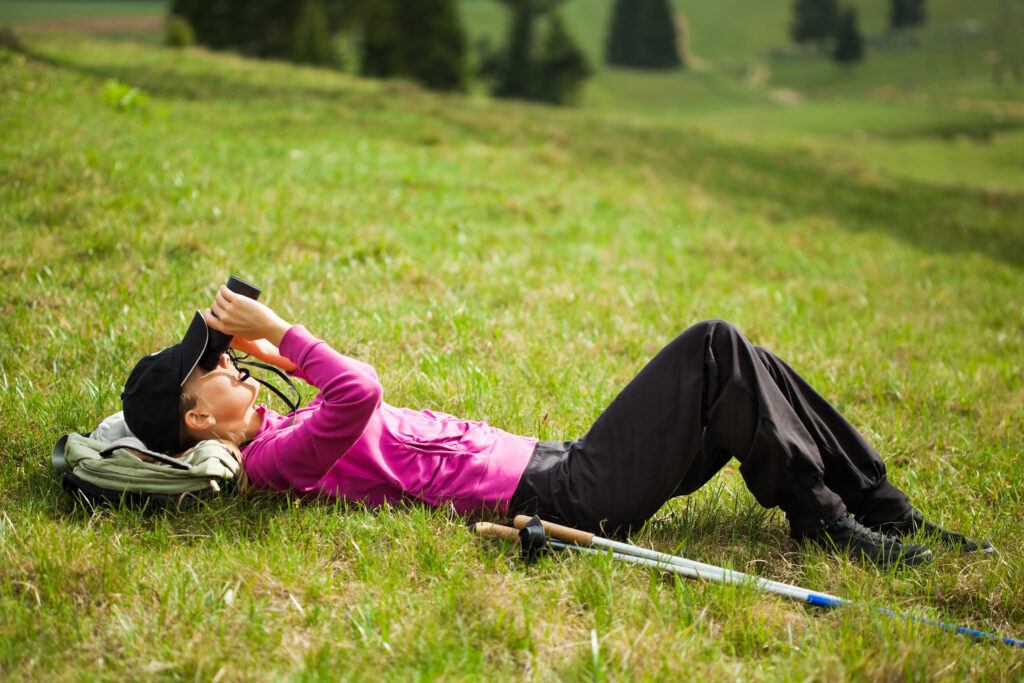
Common Nordic Walking Injuries and Prevention
When Nordic walking, you are engaging various muscle groups which can lead to certain types of injuries if not careful. Below is a list of common Nordic walking injuries and how to prevent them:
- Muscle Strains:
- Gradually increase your walking intensity to give your muscles time to adapt.
- Blisters:
- Wear appropriate footwear and moisture-wicking socks to reduce friction.
- Joint Stress:
- Use poles with correct length to avoid awkward postures that can stress your joints.
For each of these cases, ensuring you use proper technique is paramount. This includes correct positioning of poles, maintaining an upright posture, and avoiding over-striding.
Walking Safely in Different Weather Conditions
Nordic walking can be safely enjoyed in various weather conditions with the right preparation. Here are some tips for diverse scenarios:
- Sunny:
- Wear sunscreen, a hat, and UV-blocking sunglasses.
- Rainy:
- Equip yourself with waterproof attire and use poles with tips that provide good traction on wet surfaces.
- Cold:
- Dress in layers to retain body heat and ensure the outer layer is windproof.
Community and Social Aspects

Engaging in Nordic walking not only serves as a physical activity but reinforces social connections and community building. Immerse yourself in a supportive environment tailored to enhance your journey towards achieving your walking goals.
Joining Nordic Walking Groups
Finding a Group:
Research local Nordic walking communities to find a group that fits your schedule and fitness level. Groups like those listed in the Thematic analysis of the social aspects of Nordic walking often welcome new members warmly.
Benefits of Membership:
As a member, you’ll enjoy structured walks, learn from skilled instructors, and gain access to group-exclusive events.
Social Benefits of Group Walking
- Companionship:Joining group walks promotes companionship, as highlighted in the research comparing Nordic walking to non-sporting activities. Forge new friendships over shared goals and experiences.
- Support:Benefit from the motivation and accountability that comes with group dynamics. Your peers and instructors offer support, making your individual health and fitness goals more attainable.
Nutrition and Hydration
Optimal performance in Nordic walking relies on effective fueling and hydration strategies. You’ll need to focus on nutrition that supports long-lasting energy and maintain fluid balance to enhance endurance and prevent fatigue.
Nutritional Tips for Walkers
Your body requires the right blend of nutrients to sustain energy during Nordic walking.
Prioritize complex carbohydrates, which are your main source of energy. Foods such as whole grains, legumes, and vegetables release energy slowly, keeping you powered for longer.
Include lean proteins like chicken or fish to aid in muscle repair.
For endurance, B vitamins are vital; incorporate foods like nuts and seeds that are rich in these nutrients.
To assist muscle function and prevent cramps, ensure your diet has adequate minerals:
- Calcium: Dairy products or fortified plant milk
- Magnesium: Leafy greens, nuts, and whole grains
- Potassium: Bananas, oranges, and potatoes

Staying Hydrated During Walks
Hydration is about more than just drinking water; it’s about maintaining the right balance of fluids in your body.
For Nordic walkers, drinking water before, during, and after walks is crucial.
To track your hydration, pay attention to the color of your urine—pale yellow indicates proper hydration.
On long walks, consider electrolyte solutions to replace salts lost through sweat.
Remember, thirst is a late indicator of dehydration, so don’t wait until you feel thirsty to drink water.
Frequently Asked Questions
In this section, you’ll find answers to common queries about how to embark on and effectively manage your Nordic walking routine, from goal setting to tracking your advancements.
How can I set achievable Nordic walking goals?
To set achievable Nordic walking goals, start by considering your current fitness level and aim for incremental improvements. Challenge 24 is an example of a program that encourages setting monthly objectives to build endurance and skill.
What tools can I use to track my progress in Nordic walking?
Various apps are designed for tracking walking progress, such as virtual walking challenge apps. These apps often include features for setting goals, monitoring daily steps, and offering encouragement throughout your journey.
Does Nordic walking offer benefits for weight loss?
Nordic walking can be more effective in burning calories than standard walking, aiding in weight loss. Experts at Outdoors Generations report that this activity can burn up to 20% more calories per hour.
What are some potential drawbacks of Nordic walking?
While Nordic walking is beneficial for most, potential drawbacks include the cost of purchasing poles and the learning curve for proper technique. It’s also less convenient for quick, spontaneous walks since it requires equipment.
How often should I go Nordic walking to see fitness improvements?
Consistency is key in seeing improvements in fitness; therefore, engaging in Nordic walking several times a week is recommended. This ensures cardiovascular benefits and muscle engagement for better overall health.
Can Nordic walking be incorporated into a cross-training regimen?
Yes, Nordic walking can be an excellent addition to a cross-training regimen. It provides a low-impact but high-intensity workout that exercises various muscle groups, as highlighted by Nature Roamer.
It’s an effective way to diversify your exercise routine.
Revitalize Your Fitness Journey After 55!
Hey fitness enthusiasts!
Discover the secrets to vitality and well-being with Fit After 55! Whether you’re a seasoned fitness guru or just starting out, our platform is your go-to resource for holistic wellness. From setting goals to celebrating progress, let’s redefine what it means to thrive after 55! Join our community today and unlock your full potential at Fit After 55!


